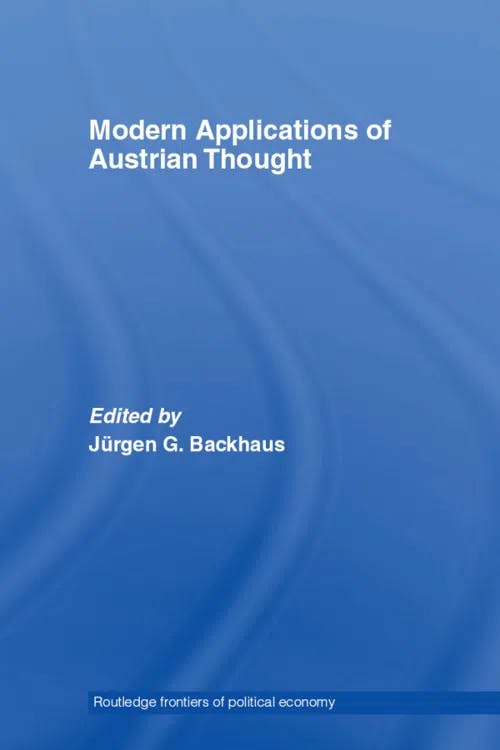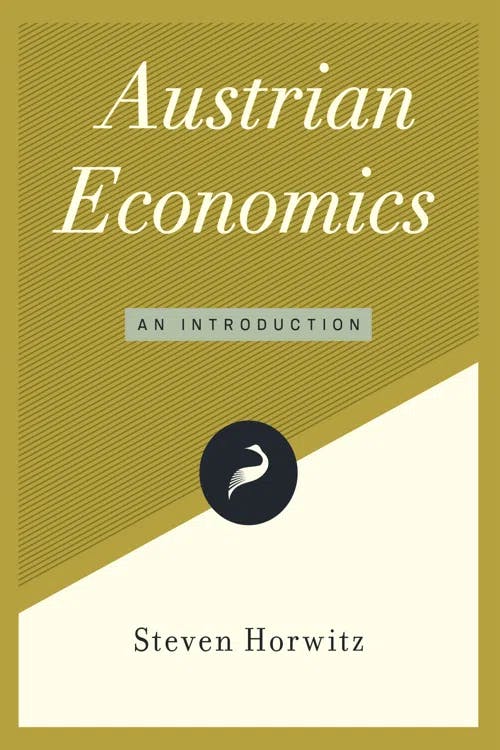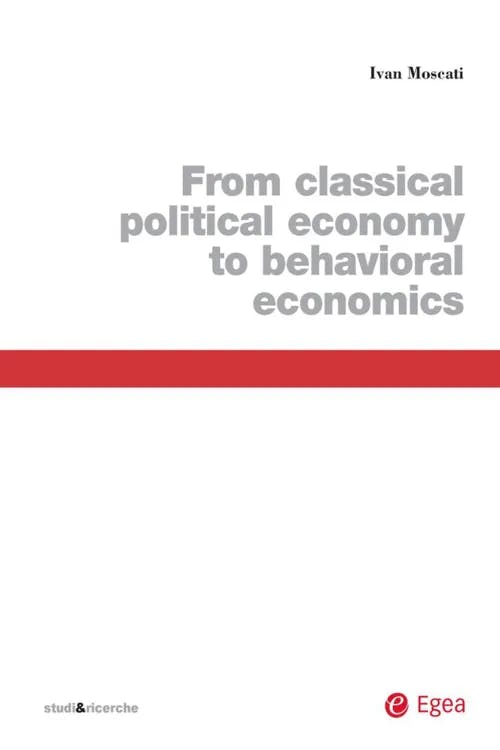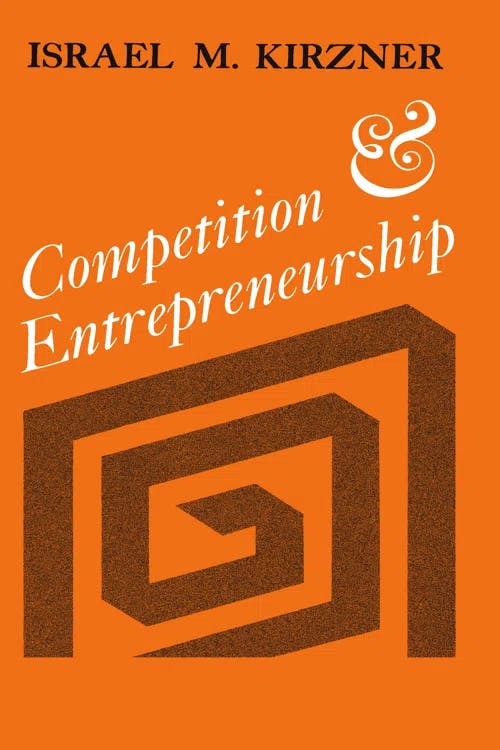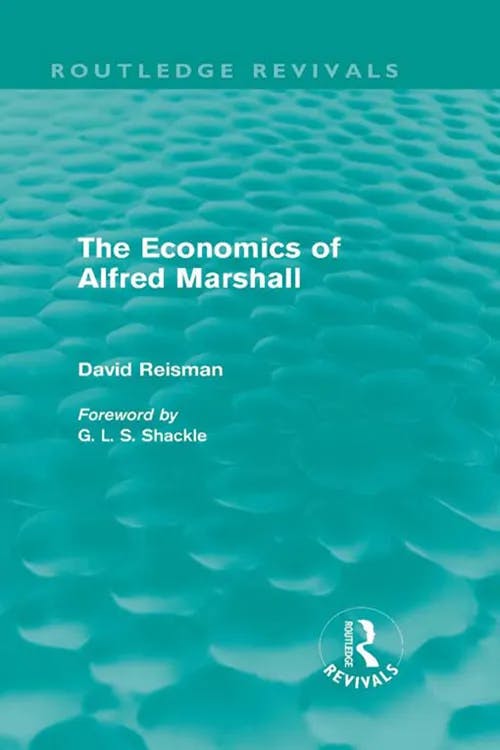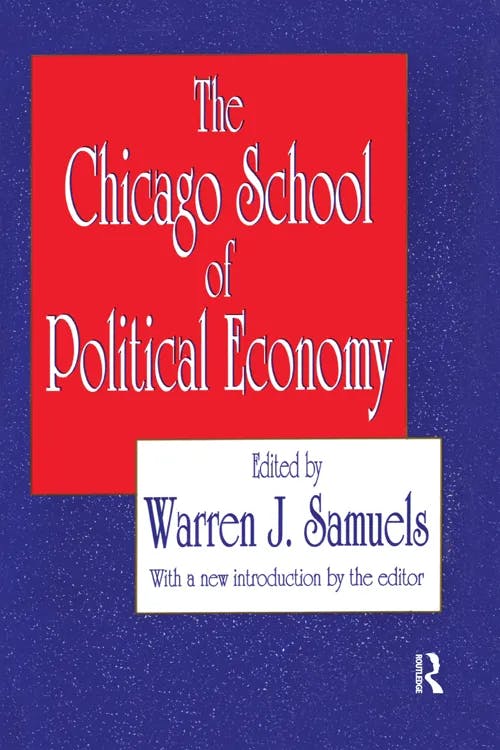What is the Austrian School of Economics?
MA, Management Science (University College London)
Date Published: 05.03.2024,
Last Updated: 05.03.2024
Share this article
Before introducing the Austrian School of Economics, it is important to define what a school of economics is. Intuitively, one would think it is an academic institution that develops and promotes a specific economic ideology. Even though this can be the case, a school of economics also refers to a group of economic thinkers who share a common perspective. Not all economists who belong to a school of economics have studied or developed their ideas under the same academic institution, but they share the same “school of thought.” Therefore, when economists refer to a “school of economics” they are interchangeably referring to an economic ideology or wave of economic thinking.
With this caveat in mind, the Austrian School of Economics was founded by Austrian economist Carl Menger in 1871. Menger studied economics at the University of Prague and Vienna from 1859 to 1863 and officially baptised the Austrian School with the publication of his book Principles of Economics (1871). Renowned economists who shared his thinking include Joseph Schumpeter, Friedrich Hayek, and Ludwig von Mises. In essence, the Austrian School advocated that economics cannot be mathematically and statistically modeled. One size doesn’t fit all, because individuals have subjective preferences and make subjective choices which cannot be accounted for in a single economic model.
Austrian School thinkers supported free markets with less government control to reflect the subjectivity and freedom of individuals’ thinking. Lawrence Moss briefly summarises and defines the essence of the Austrian School of Economics here:
The Austrian school is a “humbling school”, one that cautions other economists not to pretend that they can make marvelous forecasts about future market conditions. Austrians have most consistently ridiculed the pretensions of statistical economists and econometricians who, whether for private gain or for media reputation, declare that they can estimate some specific market rate, such as short-term interest rates, with enough accuracy to guide business decision-making or (in some circumstances) orchestrate national economic planning. ("The applied economics of the modern Austrian school," Modern Applications of Austrian Thought, 2007)
Edited by Jürgen G. Backhaus
The Austrian school is a “humbling school”, one that cautions other economists not to pretend that they can make marvelous forecasts about future market conditions. Austrians have most consistently ridiculed the pretensions of statistical economists and econometricians who, whether for private gain or for media reputation, declare that they can estimate some specific market rate, such as short-term interest rates, with enough accuracy to guide business decision-making or (in some circumstances) orchestrate national economic planning. ("The applied economics of the modern Austrian school," Modern Applications of Austrian Thought, 2007)
This school of economic thought has evolved, died, and re-emerged over time. In Austrian Economics (2020), Steven Horwitz guides us through the school’s varying fortunes:
The Austrian School dates back to the revolution in economic thinking of the 1870s that created the modern approach to economics. At the turn of the 20th century, and for the next few decades, the Austrian School was one of the dominant schools of thought in economics. Its influence was diminished in the 1930s by two developments. First, the Keynesian revolution in macroeconomics that emerged out of the Great Depression pushed Austrian ideas aside. Around the same time, microeconomics was becoming increasingly expressed in formal mathematical terms, with economic problems being seen as special types of engineering problems. Both of these changes in the way economics was done were at odds with the Austrian approach. As a result, the Austrian School all but disappeared from around World War II until the early 1970s.
Steven Horwitz
The Austrian School dates back to the revolution in economic thinking of the 1870s that created the modern approach to economics. At the turn of the 20th century, and for the next few decades, the Austrian School was one of the dominant schools of thought in economics. Its influence was diminished in the 1930s by two developments. First, the Keynesian revolution in macroeconomics that emerged out of the Great Depression pushed Austrian ideas aside. Around the same time, microeconomics was becoming increasingly expressed in formal mathematical terms, with economic problems being seen as special types of engineering problems. Both of these changes in the way economics was done were at odds with the Austrian approach. As a result, the Austrian School all but disappeared from around World War II until the early 1970s.
What are the characteristics of the Austrian School of Economics?
Every wave and school of economic thinking has a unique standpoint on all microeconomic and macroeconomic questions, and it is therefore difficult to summarise them all in one guide. However, there are three particularly noteworthy and innovative outcomes from the Austrian School of Economics that should be remembered. Economic thinkers of the Austrian School developed a unique approach when it came to thinking about the subjective nature of value and utility, their perspectives on time in the context of economic affairs, and the role of competition and entrepreneurship in business cycles. We will explore each of these three areas below.
The subjective nature of value
The question of value and utility has been explored extensively by economists of all ideologies over centuries. How do people assign a value to the goods they consume? What is the utility (i.e., satisfaction) that they extract from its consumption?
Carl Menger initiated the Austrian School of Economics by revolutionising utility theory with his contributions. He was one of the first economists to confidently say that utility, value and preferences were highly subjective, and not as easily measurable as economists like William Jevons or Léon Walras had previously suggested. Indeed, while Jevons and Walras measured utility in total terms using a hypothetical metric for satisfaction known as a “util,” Menger introduced the concept of marginal utility. His reasoning on the measurability of utility brought in the subjective nature of value and preferences that he argued for. This is explained by Randall G. Holcombe in Advanced Introduction to the Austrian School of Economics (2020):
One of the observations that Carl Menger [...] made in his Principles of Economics is that if people increase the quantity they consume of a good or service, the additional units they consume will be used to satisfy less urgent desires, and those less urgent uses will have a lower subjective value to the consumer. Water provides a good example. The first few cups of water an individual consumes every day are very valuable, and indeed, life-sustaining. People who live in places where water is costly to obtain [...] pay a lot to get it and have an incentive to conserve it. [...] If water is very inexpensive, they might use it to water houseplants, or to wash their dog or their car. These uses that have a lower subjective value do not reduce the value of the water they drink to sustain their lives, however. The first few units of water consumed will have a high subjective value, and if more is available, consumers will use them for uses that have increasingly less subjective value.
Randall G. Holcombe
One of the observations that Carl Menger [...] made in his Principles of Economics is that if people increase the quantity they consume of a good or service, the additional units they consume will be used to satisfy less urgent desires, and those less urgent uses will have a lower subjective value to the consumer. Water provides a good example. The first few cups of water an individual consumes every day are very valuable, and indeed, life-sustaining. People who live in places where water is costly to obtain [...] pay a lot to get it and have an incentive to conserve it. [...] If water is very inexpensive, they might use it to water houseplants, or to wash their dog or their car. These uses that have a lower subjective value do not reduce the value of the water they drink to sustain their lives, however. The first few units of water consumed will have a high subjective value, and if more is available, consumers will use them for uses that have increasingly less subjective value.
Even though this might seem obvious and logical to us now, Menger’s approach was groundbreaking and caused controversy in the study of economics at the time.
The element of time
Menger started the trend of thinking of economics in a more fluid way, shying away from the rigidity of mathematical models and frameworks that didn’t account for human non-linearity. Indeed, economists of the Austrian School of Economics were more granular in exploring human factors and other external factors that made those long-standing models imperfect. One of those external elements was time. As Ivan Moscati explains in From Classical Political Economy to Behavioral Economics (2013), Austrian School economists believed in the intertemporal dimension of economic activity:
In Austria, Menger’s analysis was extended by Eugen von Böhm-Bawerk, Friedrich von Wieser, and other members of the Austrian School. The Austrians insisted on the subjective nature of value and stressed the intertemporal dimension of economic activity. For them, current production costs are ultimately determined by the future utility of consumption goods; moreover, since production takes time, current investment decisions depend on expectations about the future value of consumer goods.
Ivan Moscati
In Austria, Menger’s analysis was extended by Eugen von Böhm-Bawerk, Friedrich von Wieser, and other members of the Austrian School. The Austrians insisted on the subjective nature of value and stressed the intertemporal dimension of economic activity. For them, current production costs are ultimately determined by the future utility of consumption goods; moreover, since production takes time, current investment decisions depend on expectations about the future value of consumer goods.
The Austrian School believed that the past and future of economic activity should be accounted for in order to make accurate statements about the economy. However, introducing this intertemporal element into economic models meant that more abstract and unmeasurable variables such as expectations and uncertainty were brought into the picture. Ultimately, as Holcombe argues, failing to account for the past, present and future of economic scenarios “obscures the significance of time”:
Economic processes occur over time. An equilibrium framework for analysing economic phenomena tends to obscure the significance of time, because in that framework it appears that the conditions that define an equilibrium remain given and unchanging, and the role of the market process is to pull the economy toward that equilibrium. In fact, economic conditions are constantly changing, partly as a result of the decisions continually being made by other economic actors who are deciding their courses of action based on necessarily imperfect information. Future conditions depend on decisions people are in the process of making in the present. Their choices determine the future trajectory of the economy. (2020)
Competition, entrepreneurship and business cycles
So how did the Austrian School integrate the element of time into their economic thinking to solve for the imperfection of existing models? They believed that economic situations should be looked at on a case-by-case basis. Economic success would be dictated by humans’ ability to coordinate the right resources in the right amounts at any given time. Austrian School economists argued that intervention by institutions such as the central bank impeded these natural “coordination” processes, and therefore advocated for a non-interventionist approach where markets would correct themselves.
Austrian School economists such as Israel M. Kirzner believed that competition and entrepreneurship would foster and catalyze coordination in economies, bringing them to success at different times and in different scenarios. In Competition and Entrepreneurship, Kirzner explains that entrepreneurship and competition are highly valuable because they act as the engine of economic progress — identifying and exploiting new opportunities:
In a market economy at any given time, an enormous amount of ignorance stands in the way of the complete coordination of the actions and decisions of the many market participants. Innumerable opportunities for mutually beneficial exchange (including production as an avenue for exchange) are likely to exist unperceived. Each of these opportunities also offers an opportunity for entrepreneurial profit. Each of the potential parties to each of these unexploited exchange opportunities is, as a result of the imperfection of knowledge, losing some possible benefit through the absence of coordination represented by this situation. The normative question raised by Hayek is how well the market succeeds in bringing together those uncoordinated bits of information scattered throughout the economy. Successful coordination of these bits of information cannot fail to produce coordinated activity—exchange—benefiting both parties. (1973, [2015])
Israel M. Kirzner
In a market economy at any given time, an enormous amount of ignorance stands in the way of the complete coordination of the actions and decisions of the many market participants. Innumerable opportunities for mutually beneficial exchange (including production as an avenue for exchange) are likely to exist unperceived. Each of these opportunities also offers an opportunity for entrepreneurial profit. Each of the potential parties to each of these unexploited exchange opportunities is, as a result of the imperfection of knowledge, losing some possible benefit through the absence of coordination represented by this situation. The normative question raised by Hayek is how well the market succeeds in bringing together those uncoordinated bits of information scattered throughout the economy. Successful coordination of these bits of information cannot fail to produce coordinated activity—exchange—benefiting both parties. (1973, [2015])
How does it differ from other schools of economic thought?
Over the years, different schools of economics have formed, each with its own set of ideas and principles that shape its identity. Distinguishing between a school of economic thought and an economic ideology can be tricky, as the distinction is subtle. However, apart from the Austrian School, three other significant schools exist: the Cambridge, Lausanne, and Chicago schools of economics.
Cambridge School of Economics
Economist Alfred Marshall founded the Cambridge School of Economics in the 1890s with the publication of Principles of Economics (1890). This became the dominant economics textbook in England at the time, with significant contributions on supply and demand, partial equilibrium and marginal utility. In The Economics of Alfred Marshall, David Reisman aims to explain and simplify Marshall's complex ideas. In the introduction, he acknowledges that Marshall's work is detailed and extensive, reflecting his role as a creative thinker:
If the economics of Alfred Marshall is at times tentative and impressionistic, it is because Marshall was in every respect the genuinely radial thinker, at all times conscious of a million possibilities — and of the essential complexity of human action. (1986, [2013])
David Reisman
If the economics of Alfred Marshall is at times tentative and impressionistic, it is because Marshall was in every respect the genuinely radial thinker, at all times conscious of a million possibilities — and of the essential complexity of human action. (1986, [2013])
The Cambridge School promoted and believed in the ideas of Keynesian economics. Indeed, the Cambridge School is often referred to as "the Keynesian School of Economics" due to the close relationship between Alfred Marshall, its prominent figure, and the economist John Maynard Keynes, who was a student of Marshall (resulting in a mutual influence on each other's ideas). The Cambridge School mainly differed from the Austrian one in its methodology and policy perspectives. The Austrian School promoted deductive reasoning and avoided the use of mathematics to model economics, while the Cambridge School employed empirical analysis to reach its theoretical conclusions. In terms of policy perspectives, the Austrian School believed in laissez-faire, non-interventionist policies and highlighted the role of entrepreneurship in coordinating economic activity, while the Cambridge School advocated for government intervention to correct market failures.
Lausanne School of Economics
French economists Léon Walras and Wilfredo Pareto are thought to have founded the Lausanne School of Economics in the late 19th century. The most notable difference between the Lausanne and Austrian Schools is the approach and methodology they followed to solve economic questions. Lausanne economists advocated the use of mathematics in the study of economics. What is more, the school and its member economists invented a novel sub-branch of economics known as “mathematics economics.” Margaretta Foy defines the discipline as follows:
Mathematical economics is the application of mathematical methods to represent economic theories and analyze problems posed in economics. It allows formulation and derivation of key relationships in a theory with clarity, generality, rigor, and simplicity. By convention, the methods refer to those beyond simple geometry, such as differential and integral calculus, difference and differential equations, matrix algebra, and mathematical programming. (Mathematical Economics, 2014)
Margaretta Foy
Mathematical economics is the application of mathematical methods to represent economic theories and analyze problems posed in economics. It allows formulation and derivation of key relationships in a theory with clarity, generality, rigor, and simplicity. By convention, the methods refer to those beyond simple geometry, such as differential and integral calculus, difference and differential equations, matrix algebra, and mathematical programming. (Mathematical Economics, 2014)
The Austrian School methodology was the opposite — they believed in using logic to think through economic problems without relying on mathematics to do so. However, Lausanne School economists were aware that using mathematics to understand economics had its limitations, and they pioneered utility theory by thinking of it in ordinal terms, as opposed to cardinal terms. In other words, they recognised the challenge of measuring utility and proposed that one could only compare, rank, and order the utility gained from various goods and services based on individual preferences.
Chicago School of Economics
Founded in the 1930s, the Chicago School of Economics has been one of the most influential and popular schools of economics since the end of World War II. As Warren J. Samuels argues in The Chicago School of Political Economy (2021),
Whether the success of the School is due to the merit of its ideas, the hard work and/or personality of its members, or the spirit of the age, or some combination of these, the School is arguably the most successful in economics since World War Two. The story that the Chicago School tells performs several specific functions. It attempts to describe, explain, and understand the economy. [...] It attempts to provide a psychic balm by which people can accept the market economy and its results without serious question, thus countering the, shall we say, natural tendency of people and groups to seek government solutions for common problems. And it attempts to legitimize economics as the putative queen of the social sciences, that is, to further enhance the status of economists and the social role of economists as persons of expert knowledge.
Edited by Warren J. Samuels
Whether the success of the School is due to the merit of its ideas, the hard work and/or personality of its members, or the spirit of the age, or some combination of these, the School is arguably the most successful in economics since World War Two. The story that the Chicago School tells performs several specific functions. It attempts to describe, explain, and understand the economy. [...] It attempts to provide a psychic balm by which people can accept the market economy and its results without serious question, thus countering the, shall we say, natural tendency of people and groups to seek government solutions for common problems. And it attempts to legitimize economics as the putative queen of the social sciences, that is, to further enhance the status of economists and the social role of economists as persons of expert knowledge.
Economists of the Chicago and Austrian schools share many similarities in their way of thinking. For example, they both favor policies that avoid government interference, and they rely on logical reasoning to comprehend economic phenomena. However, Chicago thinkers combine reasoning with empirical evidence and show significant differences in some points of economic theory compared to Austrian School economists. For instance, Chicago School economists and Austrian School economists often have contrasting perspectives on government intervention in interest rates. The Austrian School typically regards such manipulation as fundamentally problematic, whereas the Chicago School tends not to share this view.
Closing thoughts
Overall, the Austrian School viewed economics as a social science more than a mathematical discipline. Introducing the element of time, the subjective nature of value and preferences, and the essential role of competition and entrepreneurship sets it aside from other schools of economic thought including the Lausanne, Cambridge, and Chicago schools of economics. While the approaches and theories developed in each of these schools differ, there is no right or wrong answer here. Economics is a dynamic and evolving field, shaped by diverse perspectives and ongoing debate.
Further reading on Perlego
Carl Menger And The Origins Of Austrian Economics (2019) by Max Alter
Individualism and Economic Order (1948, [2012]) by F. A. Hayek
Austrian Economics Re-Examined: The Economics of Time and Ignorance (1985, [2014]) by Gerald P. O'Driscoll, Jr. and Mario Rizzo
What is the Austrian School of Economics in simple terms?
What are some of the key themes from the Austrian School of Economics?
What are the main differences between the Austrian School of Economics and other schools?
Bibliography
Foy, M. (2014) Mathematical Economics. World Technologies. Available at: https://www.perlego.com/book/1239853/mathematical-economics-pdf
Holcombe, R. G. (2020) Advanced Introduction to the Austrian School of Economics. Edward Elgar Publishing. Available at: https://www.perlego.com/book/3546457/advanced-introduction-to-the-austrian-school-of-economics-pdf
Horwitz, S. (2020) Austrian Economics: An Introduction. Cato Institute. Available at: https://www.perlego.com/book/1600640/austrian-economics-an-introduction-pdf
Kirzner, I. (2015) Competition and Entrepreneurship. The University of Chicago Press. Available at: https://www.perlego.com/book/1851137/competition-and-entrepreneurship-pdf
Marshall, A. (2013) Principles of Economics. Palgrave Macmillan UK. Available at: https://www.perlego.com/book/3490031/principles-of-economics-pdf
Menger, C. (2007) Principles of Economics. The Ludwig von Mises Institute. Available at: https://mises.org/library/principles-economics
Moscati, I. (2013) From Classical Political Economy to Behavioral Economics. Egea. Available at: https://www.perlego.com/book/4328773/from-classical-political-economy-to-behavioral-economics-pdf
Moss, L. S. "The applied economics of the modern Austrian school," in Backhaus, J. G. (ed.) Modern Applications of Austrian Thought. Taylor and Francis. Available at: https://www.perlego.com/book/715359/modern-applications-of-austrian-thought-pdf
Reisman, D. (2013) The Economics of Alfred Marshall (Routledge Revivals). Taylor and Francis. Available at: https://www.perlego.com/book/1674873/the-economics-of-alfred-marshall-routledge-revivals-pdf
Samuels, W. (2021) The Chicago School of Political Economy. Taylor and Francis. Available at: https://www.perlego.com/book/3078213/the-chicago-school-of-political-economy-pdf
External sources
For more about other schools of economics over time, you can read “Schools Of Economic Thought: Encyclopedia, Science News & Research Reviews”
MA, Management Science (University College London)
Inés Luque has a Masters degree in Management Science from University College London. During high school, she developed a strong interest in Economics, leading her to win the national Economics prize in her country of nationality, Spain. Her expertise is in the areas of microeconomics, game theory and design of incentives. Inés is passionate about the publishing industry and is currently working in the consulting department of the Financial Times in London.

